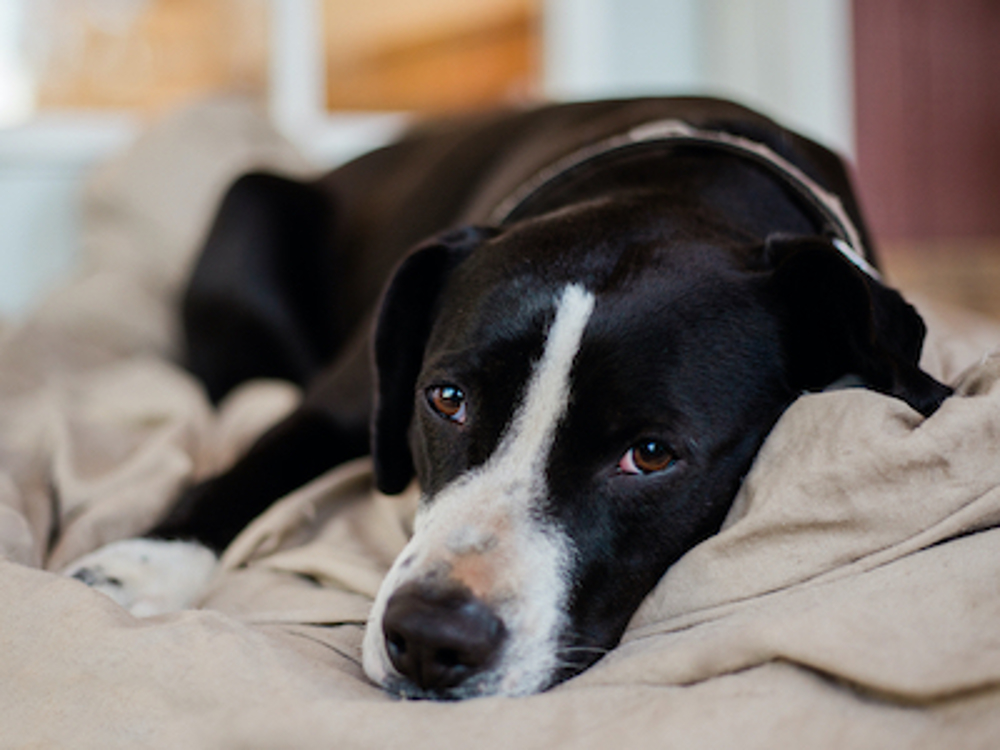Last Updated on July 2, 2021 by Fumipets
Bloody diarrhoea is not a pleasant experience for a dog to have, and it is much less pleasant for a dog owner to watch or clean up when a dog has diarrhoea. It is possible to have diarrhoea that is either temporary or chronic, and the colour of the faeces may reveal something about the underlying reason. Bloody diarrhoea is particularly worrisome for dog owners since blood is not a natural component of stools. When blood is seen in a dog’s faeces, it should always be treated carefully since there are significant reasons why this might occur.

Causes of Bloody Diarrhea in Dogs
Hematochezia is a term used to describe bloody diarrhoea that includes bright red blood, whereas melena is used to describe bloody faeces that contains black blood. Hematochezia is a complication of bleeding in the lower digestive tract, while melena is a complication of bleeding in the upper digestive system. Melene causes blood to be digested, which causes it to become black before it manifests itself as diarrhoea. It is possible to have bloody diarrhoea in either form due to a variety of reasons.
Stress: Just like it does in humans, stress may cause a dog’s intestines to leak extra fluid and blood as a result of an inflammatory response. Stress colitis is a term used to describe this condition.
Intestinal Parasites: Various worms and protozoa, including hookworms and Giardia, may produce bloody diarrhoea in the digestive tract. This is due to the fact that these parasites often feed on and/or irritate the gut wall.
Bacterial and Viral Infections: Salmonella, E. coli, and parvovirus are just a few of the diseases that may produce bloody diarrhoea; however, there are many more as well.
Trauma: If a dog sustains an injury or has surgery on the digestive system, it is conceivable that the dog may suffer bloody diarrhoea as a consequence of the accident or operation.
Bowel Inflammation: Any kind of inflammatory disease affecting the intestines may result in the development of bloody diarrhoea.
Toxins: For a number of reasons, poisoning or ingesting any food that has been identified as hazardous to a dog may result in bleeding problems throughout the body or, in particular, bloody diarrhoea in dogs.
Inflamed Anal Glands: If the anal glands become infected, impacted, or inflamed, blood may be found in the stool as a result of the infection.
Straining to Defecate: Any time a dog strains to defecate, it increases the risk of tiny blood vessels surrounding the rectal region bursting.
Cancer: A variety of cancers may impact the digestive system, which can result in a variety of symptoms, including bloody diarrhoea, which is very unpleasant.

Indiscreet Food Consumption: If a dog consumes anything that it does not usually consume, it may have intestinal irritation or inflammation, which may result in bloody diarrhoea.
Ulcers: Stomach and intestinal ulcers may result in diarrhoea and bleeding, among other symptoms.
Foreign Bodies: If a dog consumes an item that is not digestible, the object may get lodged or cause damage to the digestive system. This may cause bloody diarrhoea, which is not pleasant. 2
Side-Effects from Medications: It is not unusual for medicines to have adverse effects, one of which is bloody diarrhoea.
Pancreatic Disease: Because the pancreas is a vital organ in digestion, when this organ becomes inflamed or fails to function correctly, bloody diarrhoea may occur.
Liver Disease: Severe liver disease, which occurs when the liver is unable to function correctly, may result in bloody diarrhoea.
Kidney failure: Kidney failure may result in bloody diarrhoea if the illness is severe enough.
Addison’s disease: An endocrine condition that affects the adrenal glands and may produce bloody diarrhoea in dogs.
Blood clotting problems: Some dogs that suffer from blood clotting abnormalities may experience blood in their faeces.

Diagnosing Bloody Diarrhea in Dogs
In most cases, physically examining the faeces will reveal the presence of bloody diarrhoea. In most stool samples, bright red blood is readily visible, while dark, digested blood may be more difficult to detect. The presence of digested blood or a very tiny quantity of red blood in the faeces may be determined by your veterinarian using a test called the faecal occult blood test, which determines whether or not blood was found in the faeces.
Identifying the underlying cause of a dog’s bloody diarrhoea needs a thorough health history and physical examination, as well as a mix of diagnostics that may include faecal exams, blood work, a urine test, imaging (x-rays or ultrasound), tissue biopsies, and other tests as needed.
Treatment for bloody diarrhoea will differ depending on the underlying reason. When dealing with foreign substances or cancer, surgical intervention may be required. Dietary modifications to improve fibre intake or decrease inflammation may also be essential, and medicines to kill parasites and cure illnesses as well as relieve symptoms and offer support may also be required. Pets that are dehydrated or anaemic may also need the administration of fluids and blood products on occasion.
How to Stop Bloody Diarrhea in Dogs
Dogs should be fasted for 12 to 24 hours before the next meal is given to them. This procedure will enable the digestive system to relax since dogs may go without meals for many days at a time.
Give your dog high-potency canine-specific probiotics, such as GutSense®, to help him digest his food better. You may either mix them into water or give your dog the whole capsule as a treat. For the first 5 days, take a double dosage and then resume regular dosing as directed on the label.
When the fasting period is over, begin feeding cooked pumpkin or squash mixed with broth every 24 hours for the next 24 hours. It is recommended that you feed your dog once each day. You may provide two meals, but this will place more pressure on the irritated stomach than you would want it to. If your dog has a tendency to be cold, use chicken broth; if they have a tendency to overheat, use beef broth.
Feed the second meal 24 hours after the first one. It should be made out of cooked lean beef and a pureed squash or pumpkin for flavour. For the second time, if your dog is cold, feed chicken or other poultry, and if your dog is hot, give red meats such as beef and venison, as appropriate. After 48 hours, they should be able to return to their normal diet, which should be raw or cooked. If you are new to giving non-processed food to your dog, you should consult the Healthy Dog Food Recipe Maker.
To check your dog’s moisture level, squeeze the skin on the top of their head for one second; the skin should return to its original position in one second or less. If the skin test takes longer than 1 second and the moisture level does not improve within 24 hours, see your veterinarian immediately.
Continue to use the non-dairy probiotic GutSense® to help restore the intestinal flora in your body. Please keep in mind that dogs have a different intestinal microbiota than humans, and thus, probiotics from humans will not offer them with the same level of benefit.
If you think that your dog has ingested contaminated or damaged food, activated charcoal pills may be used to purify the food. 1 tablet for small dogs, 2 tablets for medium dogs, and 3 tablets for big dogs. Activated charcoal will aid in the absorption and elimination of poisons as well as harmful microorganisms.

Are Antibiotics Required to Stop Diarrhea in Dogs?
When it comes to diarrhoea, antibiotics are not only useless, but they are also occasionally harmful. If a pathogen was identified and the diarrhoea did not improve within 48 to 72 hours, it could only be used as a last option, according to clinical advice.
It doesn’t make much sense to provide harmful substances to the body at a time when the body is in need of cleansing itself.
In addition, research has shown that one of the most frequently given antibiotics, metronidazole (Flagyl), causes long-term disruptions of the bacterial ecology as well as diarrhoea in a healthy dog trial.


















